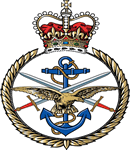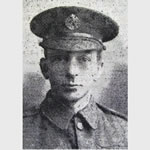Commemorated: | |||
| 1. Memorial: | The (1940) Scroll - WW1 Roll of Honour | 31A GQS | |
Awards & Titles: | |||
Education & Career :
He was a schoolmaster (Science and Botany) at Slough Secondary School in the pre-war period, resident at Glanllwchwr House, Llangennech. Born c.1879. Wife engaged to marry at Christmas 1916.
Service Life:
Campaigns:
- The First World War 1914-1918, World-wide.
| Unit / Ship / Est.: 187th (Special) Company, Royal Engineers |
| Action : Accident |
Accidents were a minor factor in the casualty list. Our definition is deaths resulting from activities that were not directly associated with 'active service'. We have excluded Naval Accidents which are seperately identified because of their numbers and impact. Many accidents involved the aviators, operating at the the limits of technology.
Detail :
He was embarked to France 10 days later, 16th August 1915, but was sent back to England on the 26th October to the 3rd Pro. Coy., R.E. He spent a little time with them when, on 23rd December 1915, discharge orders were given.
On this date, having served 142 days, and under King's Regulations Para. 392 (iii) cc., he was discharged quoting "Not being likely to become an efficient soldier." It is important to note the KR used in this context, which is under (cc), "men with between three and six months' service who in the opinion of the deputy director of medical services, or a medical inspector of recruits, are unlikely to become efficient soldiers may be discharged."
It is not known, because there are no reasons given in his file, what the cause is. The discharge suggests that he had some pre-existing condition. Noting that his attestation, rapid promotion and work in a special company suggests that he was an expert and dealing with gas, it cannot be ignored that the cause of his discharge was, perhaps, phosgene gas.
The later date of his actual death was noted as an explosion in a munitions factory, and an article with an unknown source lodged with the Imperial War Museum helps to understand what happens next and further detail:
"Griffith Brynarfryn John, Corporal. 106504, Royal Engineers. Griffith was the third son of John and Catherine John of Glanllwchwr House, Llangennech. He was educated at Aberwyswyth University before gaining his BSc at London, and became a teacher at Colne Secondary School. Griffith then joined the staff at Slough Secondary School in 1922, where he was Science Master. On 15 August 1915 Griffith enlisted at Chatham into the Royal Engineers and landed in France on the 1st August 1915 [sic] with the 187th Special Company, Royal Engineers, one of the specialists in gas warfare. He was wounded soon after and returned to England on 27 October 1915. Griffiths was discharged on medical grounds and took up a post as a chemist at Fields Munitions Works at Rainham, Essex. On 14 September 1916 a fire set of a store of explosives in the works, which in turn caused the release of poison gas. Griffith was killed that day wile attempting to save the lives of four women workers who had been trapped inside the works. Griffith is not commemorated by the CWGC as he was a civilian worker at the time of his death, and civilian casualties from the Great War are not commemorated as war dead."
For his service, whilst he was a soldier, he was awarded the 1914/1915 Star, the British War Medal and the Victory Medal.
Further context - source unknown "Russian and Swiss Chemists Maron and Wyss supported the United Kingdom's wartime efforts with their novel method for the synthesis of picric acid, carried out at a repurposed industrial facility in Rainham, Essex. The site had been used to make soap and candles for J. C. and J. Fields, but began manufacturing a TNT substitute called Dinitrophenol when war broke out. On September 14, 1916, production at what was by then known as H.M. Range Works was tragically interrupted by an explosion that killed seven people, including Dr. Maron, and injured over eighty others. One of the feedstocks, di-nitro-phenol, was stored next to the nitrating shed where a fire occurred, started accidentally by a night watchman with a cigarette. This had major consequences because the owners and operators of the plant had not realised di-nitro-phenol was an explosive. This community remembers "those involved in the tragic events that day, as well as other munitions workers who worked at the facility.
Citations & Commemorations :
He is commemorated at the War Memorial, St. Mary's, Slough.Masonic :
| Type | Lodge Name and No. | Province/District : |
|---|---|---|
| Mother : | Herschel No. 1894 E.C. | Buckinghamshire |
Initiated | Passed | Raised |
17th December 1912 | 21st January 1913 | 18th February 1913 |
Source :
The project globally acknowledges the following as sources of information for research across the whole database:
- The Commonwealth War Graves Commission
- The (UK) National Archives
- Ancestry.co.uk - Genealogy, Family Trees & Family History online
- ugle.org.uk - The records of the United Grand Lodge of England including the Library and Museum of Freemasonry
Additional Source:
- Founder Researchers : Paul Masters & Mike McCarthy
- Researcher : Bruce Littley

